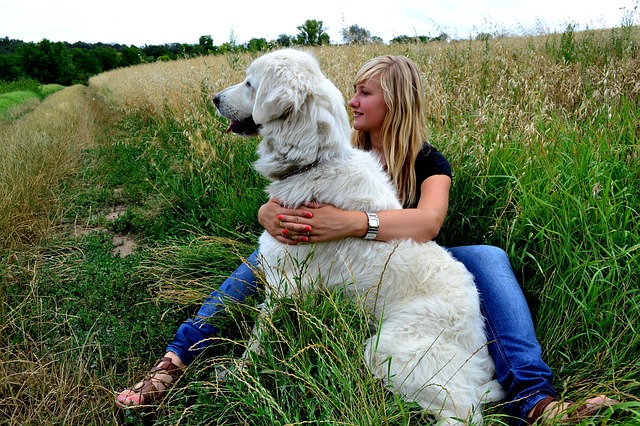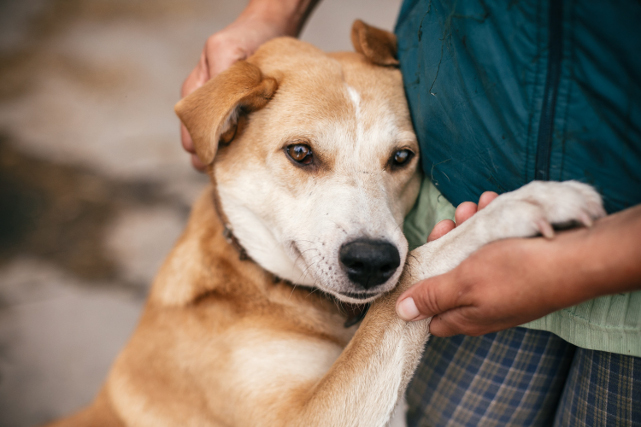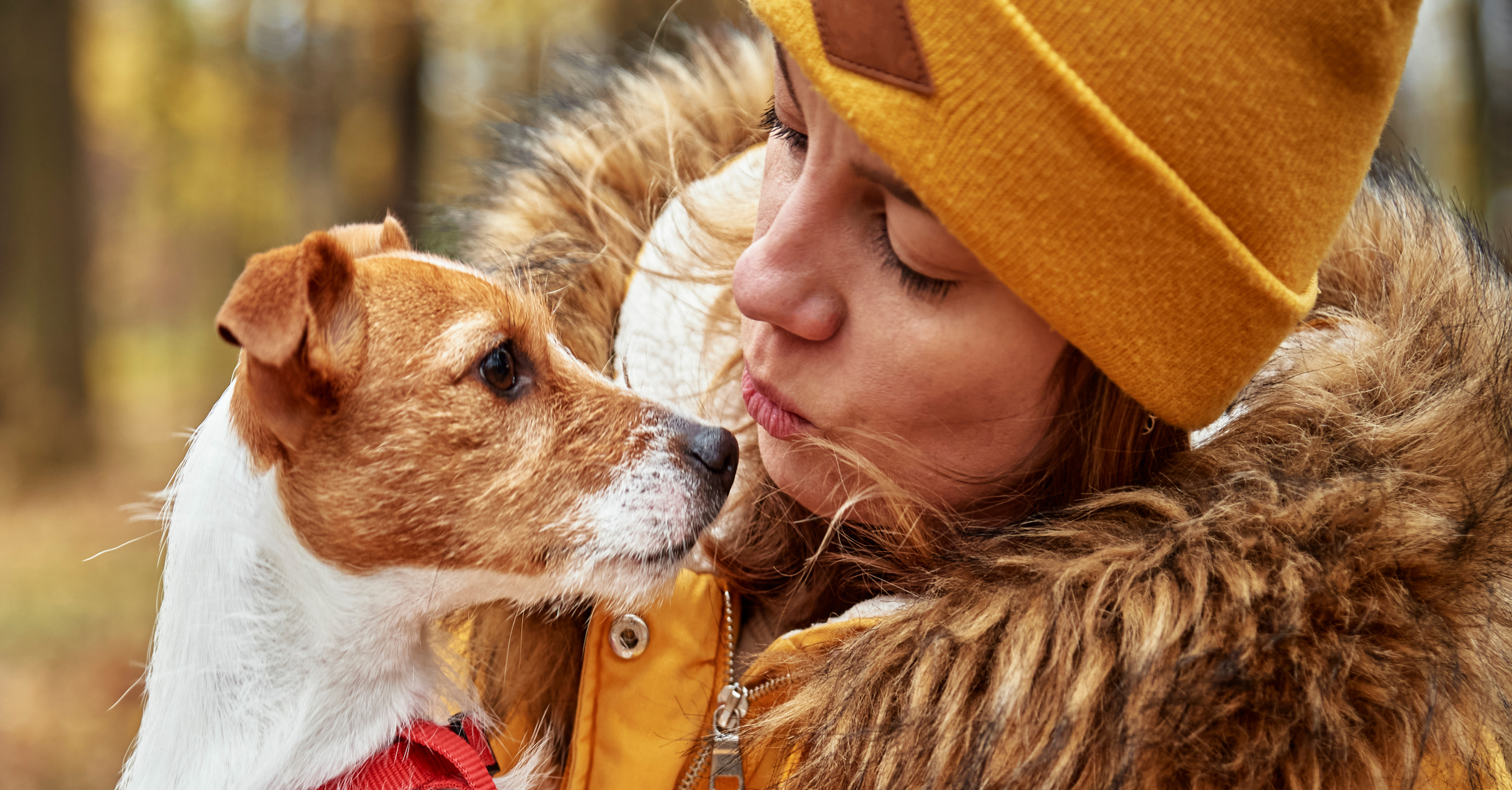Are you “outdoor aware” and conscious of the many hazards that your dog faces when you take them outside to enjoy the sunny weather in both urban and country settings? Whether you are taking pooch for a stroll in the neighbourhood or for fun in a doggie park, or are taking them with you for a hike in the country or on a camping trip with the family, keep your pet safe from all the dangers that they face in the great outdoors.
You can help ensure your pet’s health and safety by taking them to your veterinarian for regular checkups, keeping his or her vaccinations up to date, and knowing what to do in an emergency.
When you’re both outside, these are the top ten hazards to watch out for:
1. Lost Dog
Have an ID microchip inserted under your pet’s skin, which is a quick and inexpensive procedure from your veterinarian. With this form of ID, you don’t have to worry so much if your playful dog chases after new friends and runs right out of the doggie park, or if you ever become separated and their dog collar is lost. All animal hospitals and shelters check for ID microchips and will notify you when they are found.
2. Heat Jeopardy
Heatstroke is a common and preventable danger faced by your pet when outside, especially in the summer. Make sure he or she is never left alone in a car, which can turn into an oven in less than ten minutes.
See that you have a portable bowl and are carrying water to offer so that he or she doesn’t become dehydrated when outside. Don’t take them across a road or sidewalk on a hot day without checking it with the back of your hand using the five-second rule. If surfaces are too hot for you within that timeframe, it will definitely burn your pup’s paws. When camping, make sure he or she has a shady place to rest under and plenty of water to drink.
The symptoms of heatstroke are:
- Lethargy
- Decreased urination
- Dry gums
- Refusal to eat
- Sunken eyes
- Decreased skin elasticity
If you notice any of these symptoms, take your pooch to a veterinarian for help.
3. Risky Dog Encounters
Not all dogs are friendly or social, and you should check with dog owners or walkers before allowing your pooch to run up and enter another dog’s personal space. In a dog park, keep your pet in sight and be watchful.
4. Ticks, Mites, Bees, Wasps, and Other Critter Problems
Discourage your dog from chasing after bees, wasps, toads, or snakes. Don’t put your faith in nothing but a flea and tick collar to protect your dog from dangerous bites and the diseases carried by insects and critters. Use proper flea and tick prevention meds instead. Consult your veterinarian and make sure your pup has all the protection they need, which may include such things as sprays, pills, and shampoos, plus up-to-date vaccinations.
5. Road, Traffic, and Path Risks
Your dog is safest on a leash when you take them for a walk. Unleashed dogs must be trained in road safety and always obey when you call “Stop!” Some dogs are never very good at doing either.
Sometimes you may find broken shards of glass left behind by the last (irresponsible) people who visited the park, making the walk with your pup even more hazardous! If you see any shards, pick up your dog if they’re small and carry them away, or go down a different path that’s (hopefully) glass-free. The last thing anyone wants for their pooch is to pick broken glass out of their paws or fur, or even worse find they’ve been wounded!
6. Poison Dangers
Dogs love to eat horrible smelling food items and love to poke around in rubbish. Pull them away from garbage and icky, discarded scraps of anything edible, which may upset their stomach or even poison him. Landscape items such as bark chips and weed sprays are toxic to pets.
Keep your dog away and watch for signs warning of recently sprayed grass. Don’t let them chew on the leaves of any plant you can’t identify and know is safe. Just because he or she likes the flavour doesn’t mean it isn’t poisonous. Also toxic is the blue-green algae in ponds, and swimming pool and hot tub chemicals.
7. Ponds, Lakes, and General Water Hazards
Even if your dog is used to playing in water, they can get out of their depth in a pond and panic. Most dogs can swim but watch them carefully and call him or her back, or be prepared to help them if he or she gets into trouble.
8. Storms
Don’t let your pup play outside when thunder and lightning are around. He or she is a target for lightning just like a human, and they may be afraid of thunder. Take them into the house and use music, toys, or playtime to distract them.
9. Barbecue Ashes
Campfires and barbequing are fun, but there is danger when fires die down and the food and people are gone. Wood ashes and barbeque bricks may still be hot and, if your pooch pokes around ashes or knocks over the barbeque, they may suffer severe burns. Keep them away.
10. Sticks
Throwing sticks for your dog to retrieve seems like traditional fun, but there can be danger from the pointy ends or if they break apart and are swallowed. Throw balls or Frisbees instead.
We know this is all scary stuff to read, but the good news is it can all be prevented! Just watch for these hazards that may be encountered whenever you are outdoors with your dog, and practice safety first so the sunny days are full of fun for you and your pet.
Creative Commons Attribution: Permission is granted to repost this article in its entirety with credit to Hastings Veterinary Hospital and a clickable link back to this page.






